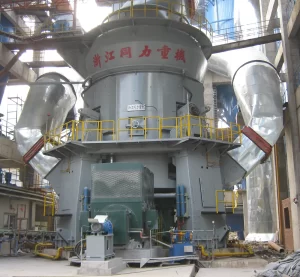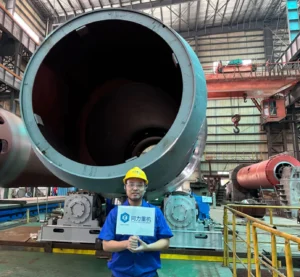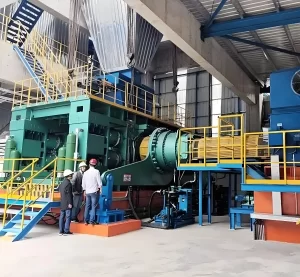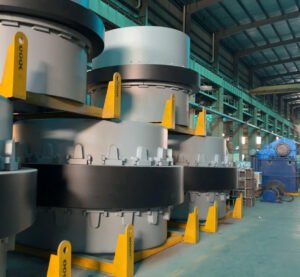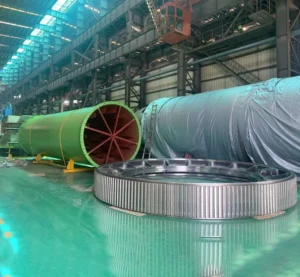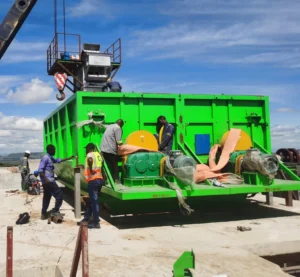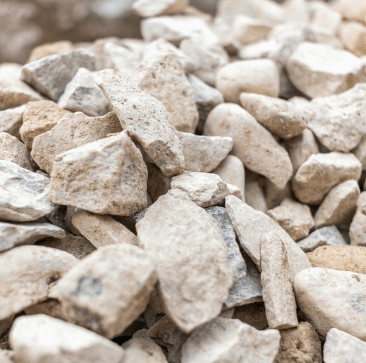-
1. What equipment and solutions does Tongli Heavy Machinery provide in the cement industry?
Tongli Heavy Machinery can provide customized solutions for cement production lines with daily production capacities ranging from 1,500 tons to 6,500 tons, covering all aspects from raw material crushing to finished product production. Its main products include core equipment such as ball mills, rotary kilns, vertical mills, roller presses and crushers, and auxiliary equipment such as bag dust collectors and belt conveyors, which are suitable for cement production lines of different sizes. Tongli also provides composite process designs such as open circuit/closed circuit/ball mill/vertical mill/roller press for cement grinding stations. The open circuit system is suitable for factories with simpler production processes, while the closed circuit system improves the quality of cement products through efficient grinding and powder selection systems, reduces energy consumption and waste, and has been widely used in the ultrafine powder industry in recent years.
-
2. What are the main equipment used in the production process of cement?
First, Tongli crushers (such as jaw crushers and hammer crushers) are used to break raw materials such as ore and limestone into small pieces. Then, Tongli ZJTL raw material mills (such as vertical mills and ball mills) further grind the raw materials into fine powder to ensure uniformity. Next, the raw materials are preheated by preheaters to improve calcination efficiency. After that, the rotary kiln is the core equipment of cement production, which is responsible for calcining the preheated raw materials into clinker at high temperature. The calcined clinker enters the cooler to quickly cool down and maintain product quality. After the clinker is cooled, it enters the cement mill (such as ball mill or vertical mill) and is mixed with gypsum, slag, etc. to grind into finished cement products. Finally, the cement is automatically bagged by the packaging machine and stacked by the stacking robot to prepare for shipment.
-
3. How does Tongli Heavy Machinery optimize the process flow at each stage in the cement production line?
Tongli Heavy Machinery improves the production efficiency of cement plants through innovative technologies and equipment. In the raw material processing stage, Tongli Heavy Machinery uses high-efficiency crushers and vertical mills to reduce energy consumption while improving grinding efficiency and ensuring the uniformity of raw material particle fineness. During the calcination process, the rotary kiln is equipped with advanced temperature control systems and high-quality refractory materials to optimize thermal energy utilization and ensure the stability and uniformity of clinker calcination. In addition, Tongli Heavy Machinery’s multi-stage preheater and decomposition furnace further improve heat exchange efficiency and reduce fuel consumption. In the cement grinding stage, an efficient cement mill and powder selector are used in combination to increase the specific surface area and uniformity of the finished product and ensure cement quality. Automated packaging systems and palletizing robots ensure fast shipment of the production line. By introducing intelligent control systems at each stage, production efficiency is greatly improved to meet the needs of modern cement production.
-
4. How does Tongli Heavy Machinery ensure the quality of its equipment?
Through high-precision processing equipment, scientific process flow and strict quality control system, Tongli Heavy Machinery ensures that the equipment maintains high efficiency, energy saving and long-term stability in the cement production line. During the equipment manufacturing process, Tongli Heavy Machinery used a high-precision 16m CNC vertical lathe and a 20m large horizontal lathe to ensure the processing accuracy of key components. Precision processing can reduce friction and energy consumption during equipment operation and improve the operating efficiency of the equipment. Secondly, Tongli Heavy Machinery adopts automated welding technology, combined with UT/MT/PT non-destructive testing methods to ensure the reliability of welding quality and enhance the durability of equipment under high temperature and high pressure environments. In terms of equipment material selection, Tongli Heavy Machinery strictly selects SGS certified alloy steel and performs heat treatment to improve the wear resistance and fatigue resistance of components and extend service life. In addition, Tongli Heavy Machinery adopts dynamic balancing detection technology to ensure the stability of rotary equipment (such as rotary kilns, mills, etc.) during high-speed operation, reduce vibration and wear, and ensure long-term stable operation.
-
5. How much does it cost to build a cement production line?
For a small cement production line with a daily output of less than 500 tons, it costs about 1 million to 3 million US dollars. For a medium-sized cement production line with a daily output of 500 to 3,000 tons, the investment scale is about 5 million to 20 million US dollars. Medium-sized production lines are equipped with more advanced equipment, such as large vertical mills, high-efficiency preheaters, coolers, etc., which can meet larger market demand. Large cement production lines with a daily output of more than 3,000 tons require an investment of 30 million to hundreds of millions of US dollars. According to different customer requirements and different process flows, the price will also fluctuate greatly. Tongli can provide customized solutions based on customer requirements and actual conditions.
-
6. How to reduce energy consumption in cement production lines?
The use of a 5-stage cyclone preheater can greatly improve the efficiency of heat recovery and reduce energy consumption during calcination. The five-stage preheater and decomposition furnace system used in modern cement plants can effectively recover heat from exhaust gas and increase the heat utilization rate to 75%-80%, which saves about 10%-15% energy compared to the traditional three-stage preheater. Optimizing the operating parameters of the rotary kiln and using advanced combustion technology and intelligent temperature control systems can ensure complete combustion of the fuel in the kiln and reduce unnecessary energy losses. Using high-efficiency mills (such as vertical mills) instead of traditional ball mills can significantly reduce power consumption. Vertical mills usually consume 30%-40% less power than ball mills and have higher grinding efficiency. In addition, using motors with higher energy-saving ratings such as the YE6 series can also effectively reduce overall energy consumption. By combining these technologies and equipment, cement plants can achieve a 20%-30% reduction in energy consumption.

